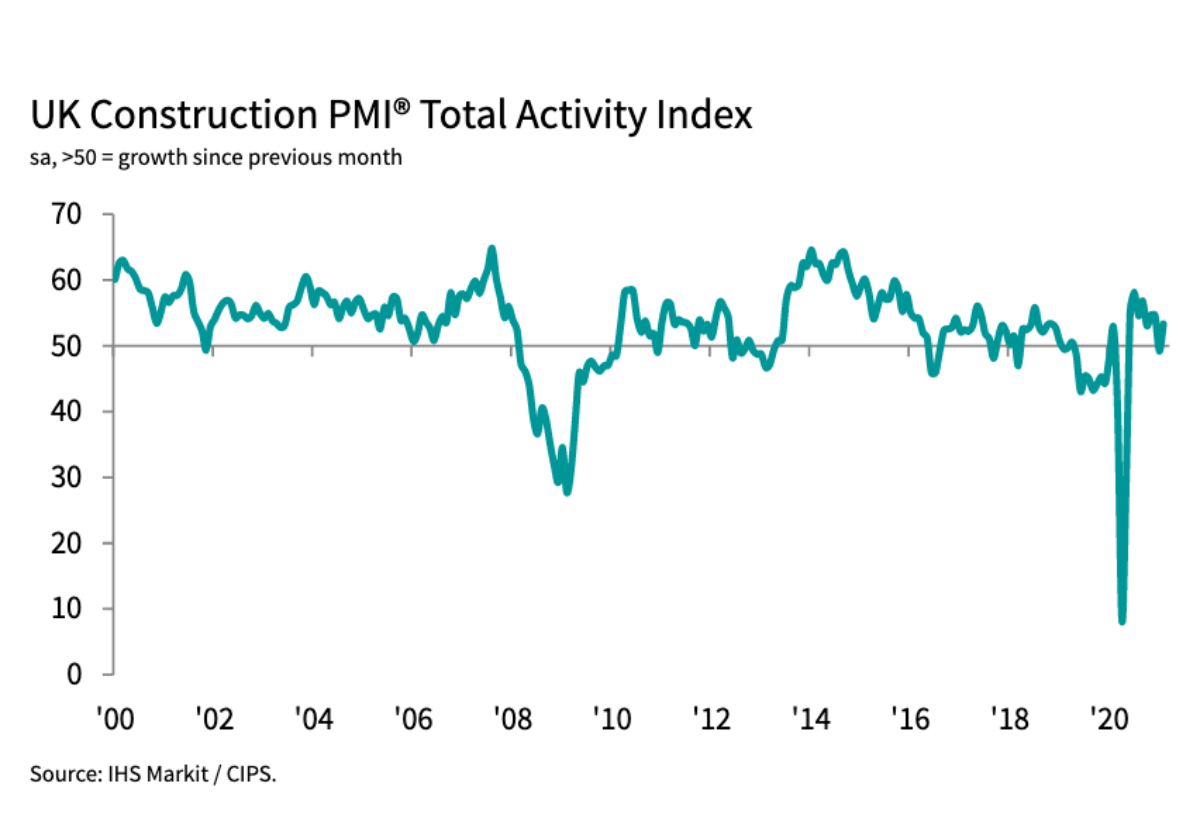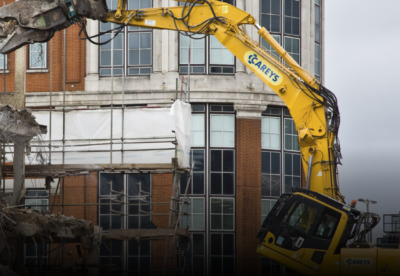The latest IHS Markit/CIPS UK Construction Total Activity Index posted 53.3 in February – up from 49.2 in January, where any reading above 50 represents growth.
Residential work remained the strongest area of growth in February although the speed of recovery eased slightly since January.
There were some reports citing temporary delays on site arising from adverse weather and supply chain issues -especially for timber.
But the slowdown in house building was more than offset by the sharpest rise in commercial work since last September in anticipation of improving UK economic conditions over the course of the year.
Optimism levels among buyers hit their highest levels for five years.
Tim Moore, Economics Director at IHS Markit, said: “Construction work regained its position as the fastest-growing major category of UK private sector output in February.
“The rebound was supported by the largest rise in commercial development activity since last September as the successful vaccine rollout spurred contract awards on projects that had been delayed at an earlier stage of the pandemic.
“Civil engineering activity has been somewhat subdued in recent months, but survey respondents continued to cite the positive outlook for infrastructure work on major transport projects as a factor helping to boost confidence in the construction sector.
“Stretched supply chains and sharply rising transport costs were the main areas of concern for construction companies in February.
“Reports of delivery delays remain more widespread than at any time in the 20 years prior to the pandemic, reflecting a mixture of strong global demand for raw materials and shortages of international shipping availability.
“Subsequently, an imbalance of demand and supply contributed to the fastest increase in purchasing costs across the construction sector since August 2008.”
Duncan Brock, Group Director at the Chartered Institute of Procurement & Supply said: “On the one hand, February saw a welcome rise in overall output in the construction sector as commercial projects in particular were woken from their slumber and purchasing levels rose across the board for the ninth month in a row.
“On the other hand, strong demand for products added pressure to already impaired supply chains as sellers battled with raw material shortages, and the costs of business rose at the fastest rate since August 2008.
“Though delivery times were still deteriorating as port disruptions made their mark, it was to a lesser degree compared to January suggesting the worst of the squeeze due to Brexit may have eased.
“Supply chain managers found themselves spinning a number of plates with creative ways to get stock including sourcing more local supply for some.
“These ongoing issues did nothing to dampen builder enthusiasm as optimism for the future rose to its highest since October 2015 and this return to confidence lead to job hiring at the fastest rate for almost two years.
“With part-time furlough options now in place, some constructors will be mixing and matching their approaches to meet the ebb and flow of projects and capacity in the coming months.”
Knowledge is power – get all the construction data you need
The Enquirer has introduced a new construction data page offering easy-to-access market intelligence to help you do better business.
Alongside contracts leagues and daily tender invites, it helps you make informed business decisions with coverage of breaking economic news, latest workload and tender prices forecasts.
There is also a snapshot of current freelance labour rates and a guide to the best and worst payers within the major Tier 1 contractors.
For those looking to navigate the ever-changing world of contract and employment law, lawyers at Fenwick Elliot also give you the benefit of their expert insight.
And, of course, it’s all completely free for readers.
Click here to take a look.



















 (300 x 250 px).jpg)































.gif)




